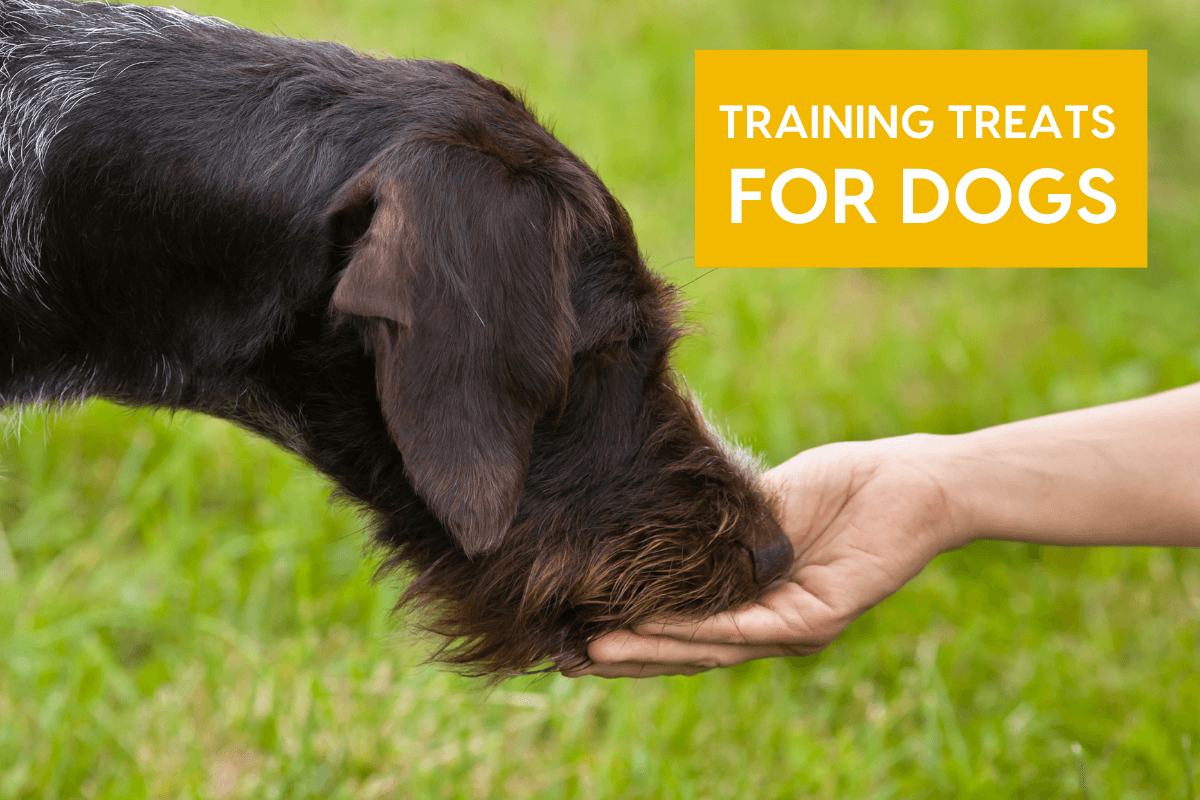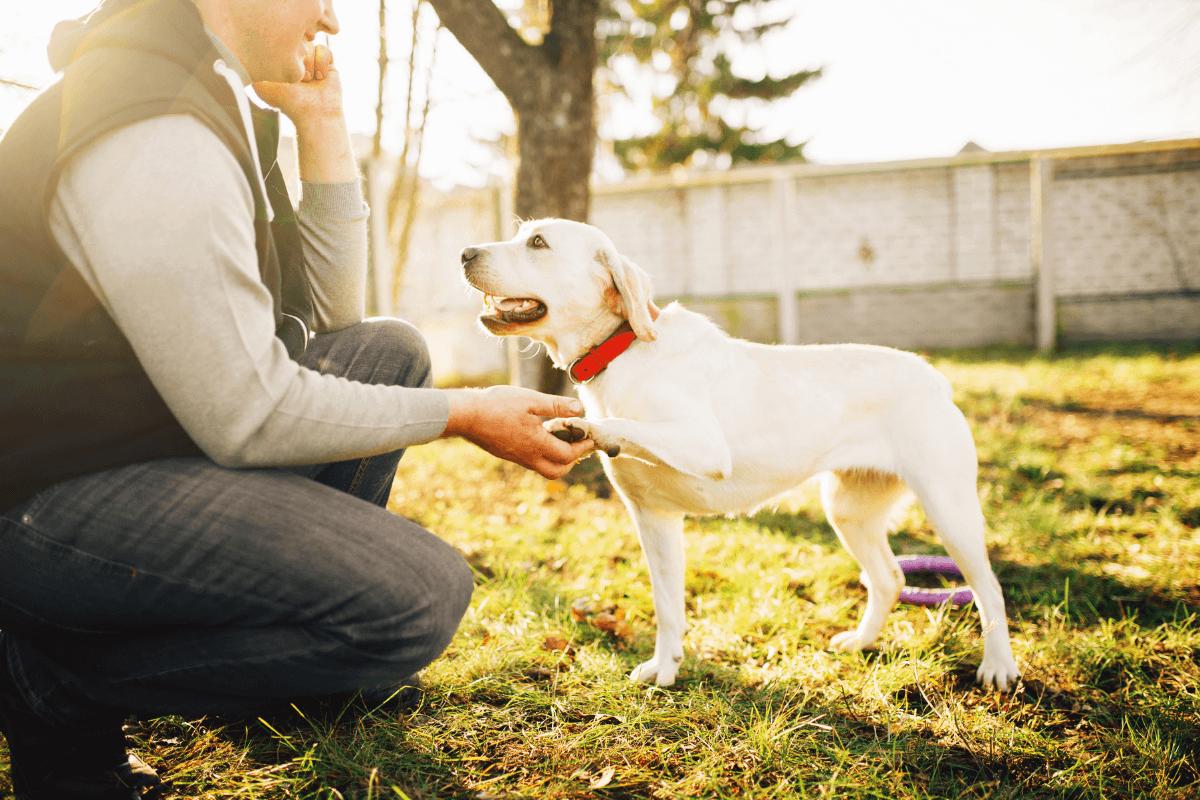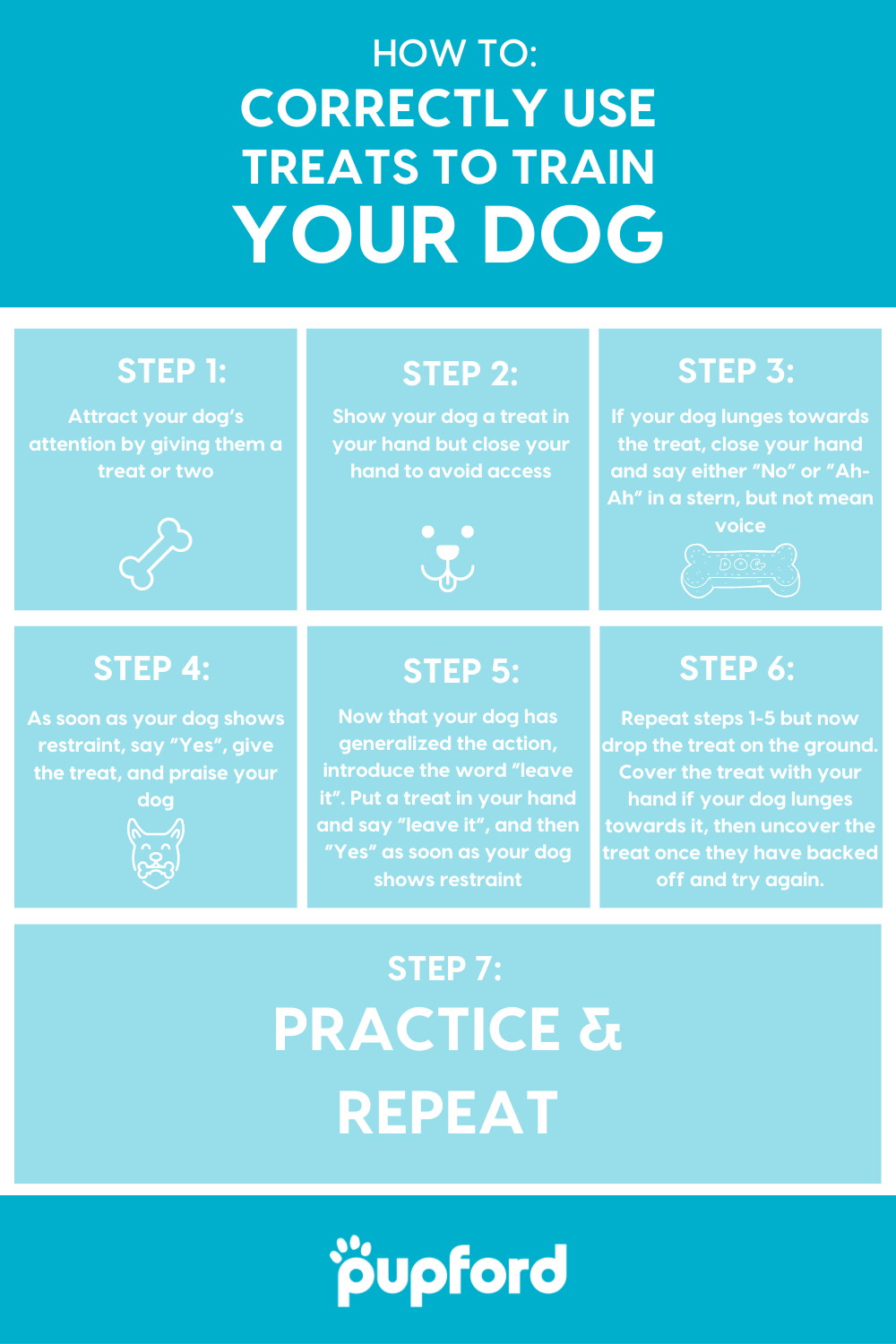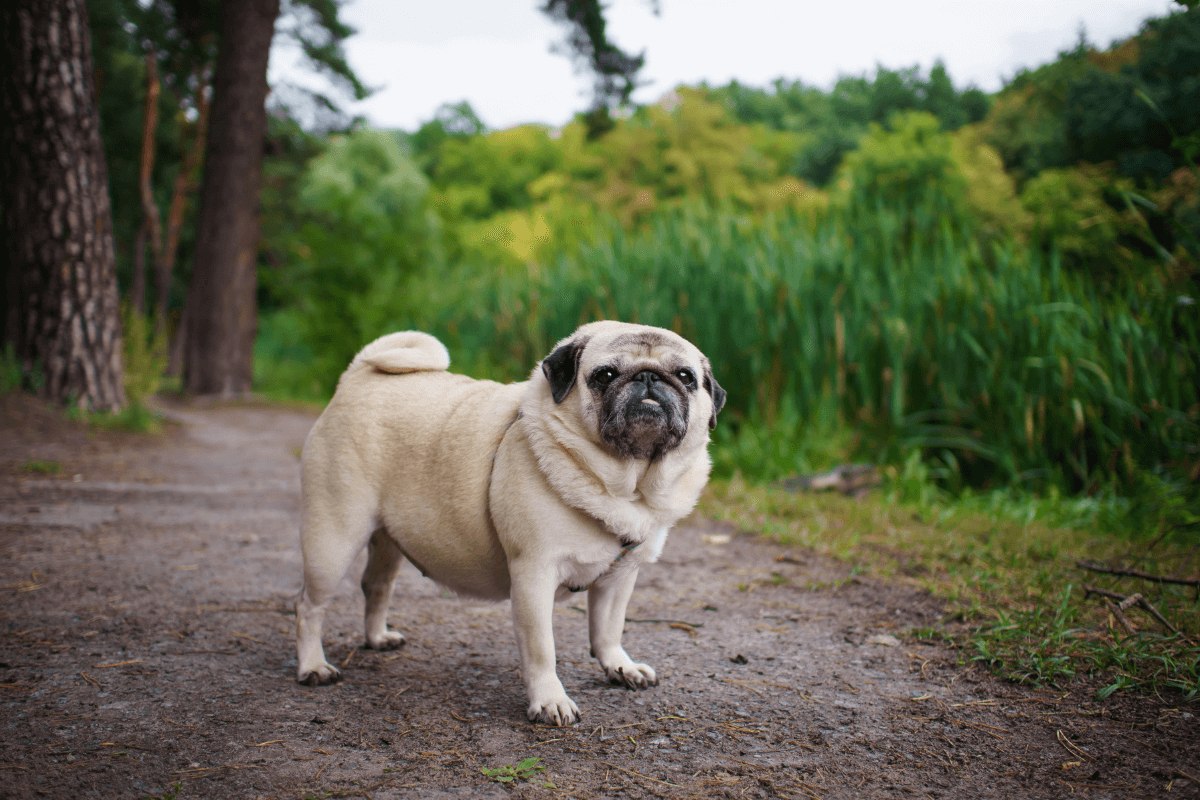Training Treats for Dogs: Everything You Need to Know in 2024 | Pupford

I’m sitting here writing this two days after our dog became sick from what we believe to be human feces at a park.
Cute, I know.
He’s better now, but my point here is that I know all too well the effects that certain dog treats (and things that definitely are not foods, yet your dog seems to love to eat anyway (eye roll)) can have on their stomachs.
This is a pretty extreme example, but the treats we can give our pups can impact their health and wellbeing. So how can we make sure we are giving our dogs the best when labels can be misleading, some products can actually be dangerous for your pup, there are too many ingredients in a treat, we may not be using them properly, and they may be too high in calories? It comes down to understanding the truth behind our dog's treats.
So let’s get right down to it. We want to cover every possible question we can about dog training treats, treats for puppies, what to give your pups for training, and more. Did we not answer your question? Ask your question in the comments and we would love to assist you more.
DOG TRAINING AND TREATS
First off... Have you tried our free dog training program?
Spoiler alert, Zak teaches positive reinforcement that allows you to tailor your training to your own unique dog.
In it he also recommends using a high-value treat your dog loves to get them to focus during training sessions because they know they will be rewarded for their efforts.
WHY ARE TREATS EFFECTIVE FOR TRAINING DOGS?
It comes down to effort vs. reward. As humans, we are constantly determining if putting forth a certain effort is worth the reward. Is it worth it to skip the fast food and eat a salad instead to help us reach our health goals? Is it worth it to get out of bed and clean or should I just stay in bed and watch Netflix?
Dogs can do the same thing.
My dog is way more inclined to do something that he knows will lead to a reward for him. Like a treat or a trip to the park. As previously mentioned, treats can effectively engage your pup and get them to perform desired actions for their reward.
But there is more than just giving your pup any treat. Not all treats are created equally.
DO THE TYPE OF TRAINING TREATS MATTER?
Absolutely. When training, you are repetitively asking your pup to perform certain actions until they begin to stick. How are you supposed to have a training session where repetition is necessary with a huge treat? Likewise, if a treat is too high in calories and you are working on new behaviors, they will consume too many calories.
You want to make sure you are using a high-value treat that is small, with an enticing aroma or taste your pup can’t resist. It makes all the difference in training!
WHAT YOU SHOULD LOOK FOR IN DOG TRAINING TREATS
- Enticing Aroma / Great Taste
- Simple Ingredients
- Small in Size (Biscuits aren’t necessary)
- Low Calorie Count
- Fast Eating Treats
WHAT DO DOG TRAINERS USE FOR TREATS?

Because treats are so important for a successful training session, trainers put a lot of thought into the products that they choose to use for training pups.
Here are some of the most important factors for consideration trainers look at while choosing a treat:
- The dog must like it - this is definitely one of the most important things when trainers choose a treat. If a dog does not care about the treat you have, most likely they will not care to do what it is that you want them to do. Cooked, dry, or dehydrated meats are usually a winner, as most dogs can’t resist that enticing aroma.
- Size of the treat - size IS important when choosing the treats. As a rule of thumb, choose treats around the size of a pencil eraser. They will be able to be rewarded more, and not feel sick from the amount of food they are consuming.
- Different options - some dogs could eat the same treat every session and LOVE it. Others may lose interest in a treat after a certain amount of time. Having a few different options will make it so that your pup stays motivated and ready to learn. I love to have this treat and this one on hand, to switch it up.
QUALITY OVER QUANTITY
In this study, dogs were trained to traverse a runway for a food reward. In one case, the dogs were given one to five pieces of dry food, and in case two, the dogs were given a higher quality food (like sausage). The study found that dogs were not likely to run faster when given more pieces of dry food, but that they did run significantly faster when given the higher quality food.
Especially when training, the treat that you choose to reward your pup with can give them the extra motivation that they need to successfully learn and master different tricks and behaviors.
HOW TO CORRECTLY USE TREATS TO TRAIN A DOG
There are correct times to give your dog treats during their training session. We took a small section out of Zak’s 30 Day Perfect Pup eBook, to show you one way to successfully use treats in training when teaching your dog how to “leave it”.

Step 1: Attract your dog’s attention by giving them a treat or two
Step 2: Show your dog a treat in your hand but close your hand to avoid access
Step 3: If your dog lunges towards the treat, close your hand and say either “No” or “Ah-Ah” in a stern, but not mean voice
Step 4: As soon as your dog shows restraint, say “Yes”, give the treat, and praise your dog.
Step 5: Now that your dog has generalized the action, introduce the word “leave it”. Put a treat in your hand and say “leave it”, and then “Yes” as soon as your dog shows restraint.
Step 6: Up the difficulty by repeating steps 1-5 but instead of holding it in your hand, drop the treat on the ground. Cover the treat with your hand if your dog lunges towards it, then uncover the treat once they have back off and try again.
Step 7: Practice & repeat!
Using treats to get your dog's attention, and then when they perform the action that you are wanting from them, are two important times to use treats during training. For more tips, tricks, and helpful training tools, check out the rest in our 100% free online class.
CAN YOU TRAIN A DOG WITHOUT TREATS?
Dogs are all different. Some are very food motivated, while other puppies don't really like treats. My dog would do anything for almost any food, while my in-law’s dog couldn't really care less about it.
Different training methods will work differently with different dogs. But in most cases, training your pup becomes a lot easier and more effective when there is a high-value reward on the other side.
RISING OBESITY RATES IN DOGS

Not only can rising obesity rates in dogs make them unhealthy, it can lower their quality of life, increase their risk of developing conditions like arthritis and diabetes, and it can also lower their life span. We want our dogs healthy so that they can enjoy a nice long life.
Just like the labels for the food that we eat - you want to look at ingredients in your dog’s food and treats. A lot of dog treats are actually loaded with sugar, other additives, or high amounts of fat.
WHAT YOU SHOULD LOOK FOR WHEN BUYING A TRAINING TREAT
CHECK THE LABEL
Look at the order of the ingredients in the food. For example, if a treat says it is called beef and filet mignon dog snacks, but when you look at the ingredient list, it is down towards the bottom of the list.
Look at the ingredient list. Do you know what the ingredients are in the food? Can you pronounce them?
WHAT YOU SHOULD LOOK FOR ON THE LABEL
- Top Quality Ingredients
Look for ingredients that are fresh, pure, dehydrated, freeze-dried, and minimally processed. Minimally processed foods preserve the vitamins, minerals, and other nutrients in the food - to keep its integrity.
- Whole Foods
Whole foods are better than a byproduct. For example, wheat flour would be the byproduct of wheat.
- Natural
These foods will be made without fillers, chemicals, and other additives.
- Low Calorie
Calorie count does matter for dog treats. There is a 10% rule. Which is exactly what you think it would be - treats shouldn’t make up more than about 10% of your dog's daily caloric intake. If your dog normally eats 800 calories a day, the treats shouldn’t make up much more than 80 calories of their daily limit.
Your veterinarian would be able to tell you the number of calories your pup should be eating a day, we also love this calculator.
Since you don’t want your dog's treats to take up too much of their daily calorie count, it is especially important to find low calorie treats when training your dog. Because of the repetitiveness, if given a biscuit or other large treats, these calories would add up really quickly.
- Grain Free Treats
Grain-free treats often contain more protein, fewer carbs, and are easy to digest. Perfect for your training session.
- Low Fat
Because so many treats are high in calories and high in fat, and dogs are fed too many treats, obesity rates have risen. Making sure the treats are low fat is one way to help your dog stay his or her happy, healthy self.
SECRETS OF THE DOG TREAT AND CHEW INDUSTRY
Obviously, the kind of treat you give your dog does matter. We've found that a lot of treats are:
- Filled with too many ingredients. Why give dogs treats with too many ingredients including ones we've never heard of?
- Loaded with calories. If training treats, or any treats, are too high calorie your dog is going to gain weight. We must be careful about how much we are rewarding our pup. Remember, quality is better than quantity.
- Too large. How is a dog supposed to have a training session where repetition is necessary with a huge treat?
- Misleading. Labels and ingredients can lead us to think they are good for them, when in fact they are not!
- Not supportive. Good treats are great, but that can't be the end of it. What else are companies providing you with to make sure you have the support you need to help you and your pup succeed.
- Dangerous! Rawhides can potentially have contamination, cause digestive irritation, or cause choking or blockages. True story, we gave my dog half of a rawhide years ago, because we were led to believe that they were good for our dog, and he became super sick. We immediately returned the rest, and never bought them again.
Our favorite treats of choice are natural, low calorie, and provide a high-value reward for our pup.
We love Pupford’s Sweet Potato Training Treats as a non-meat option to mix up with our Beef Liver Training Treats. Shop here and save with autoshipments.
0 Comments